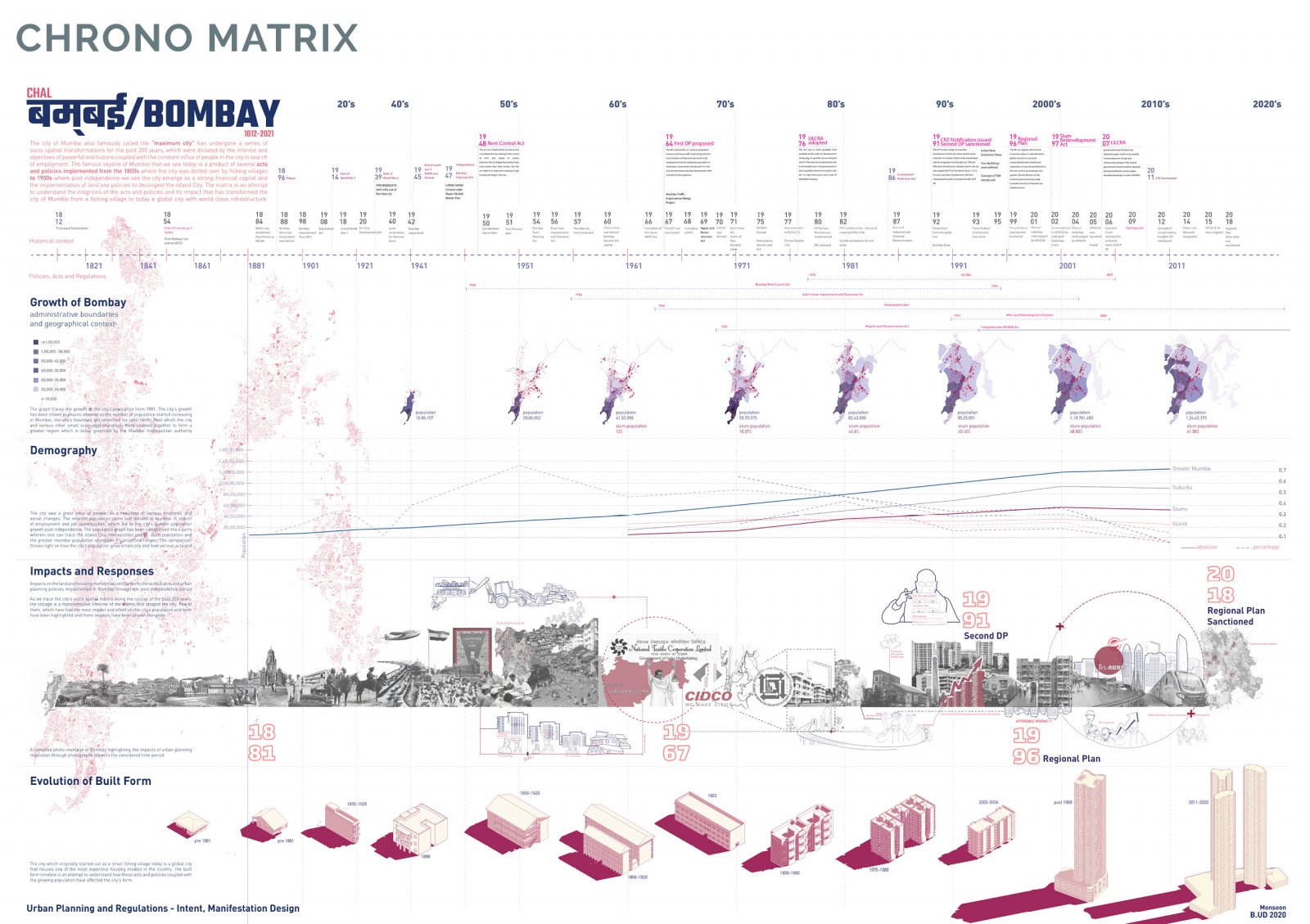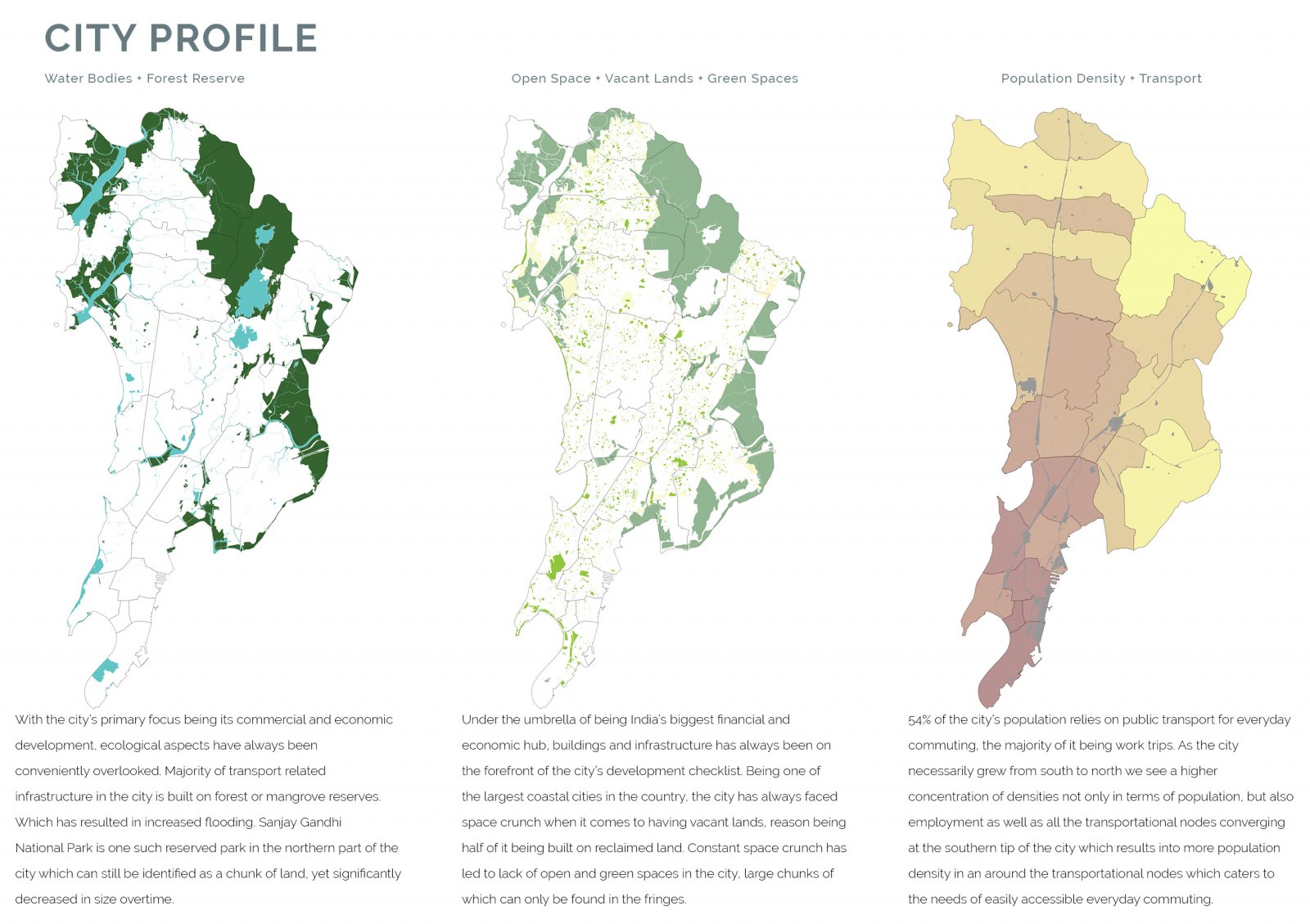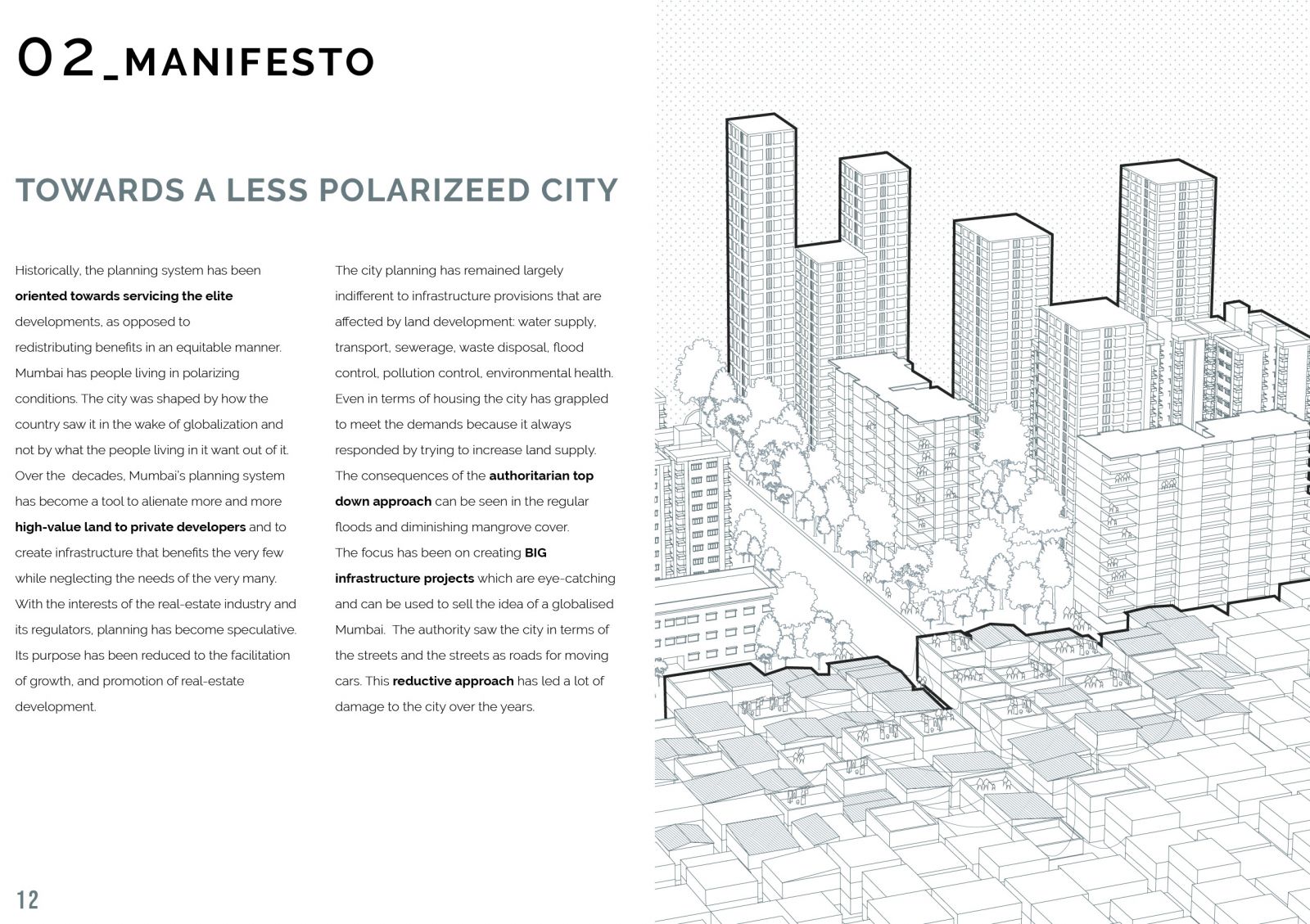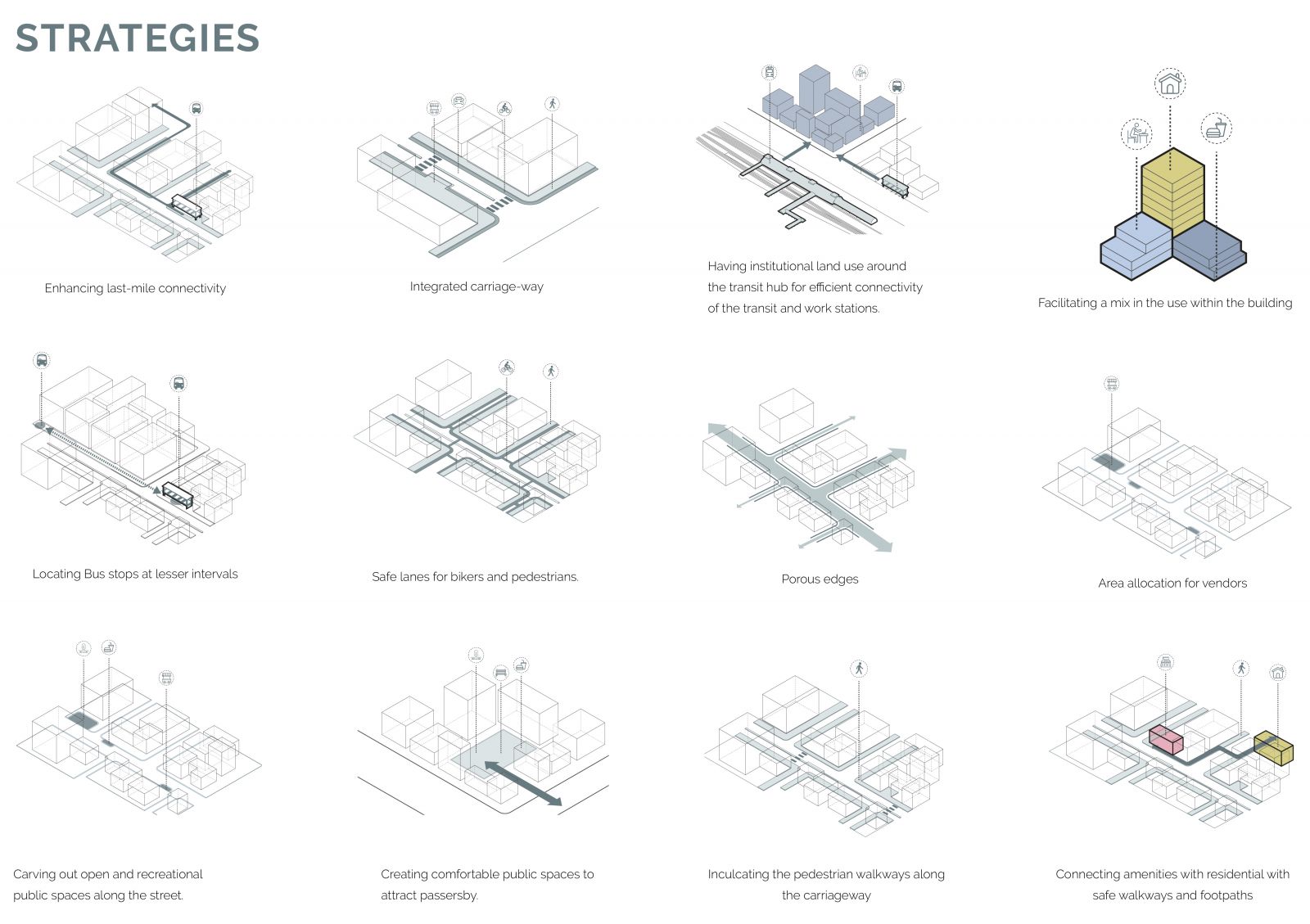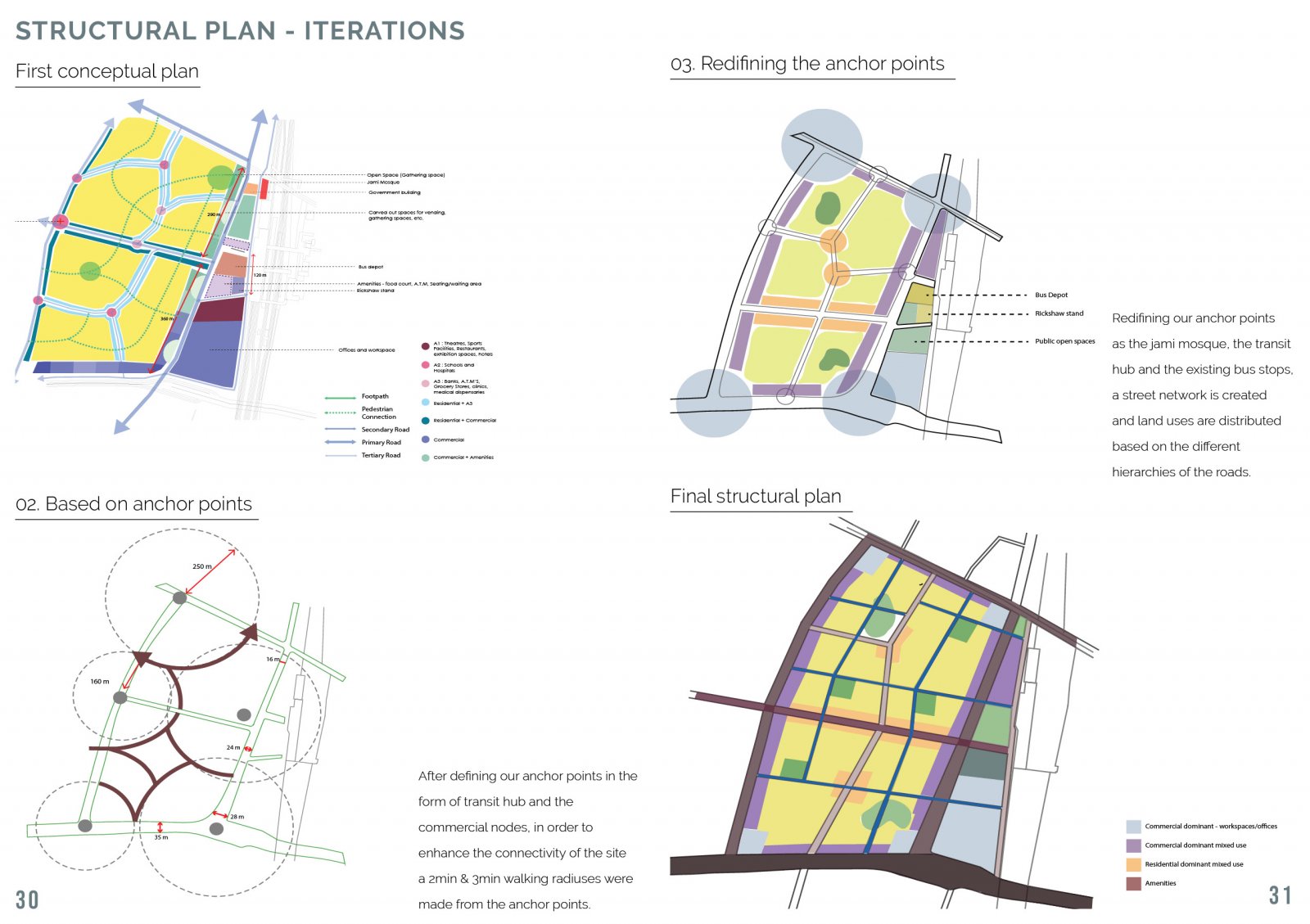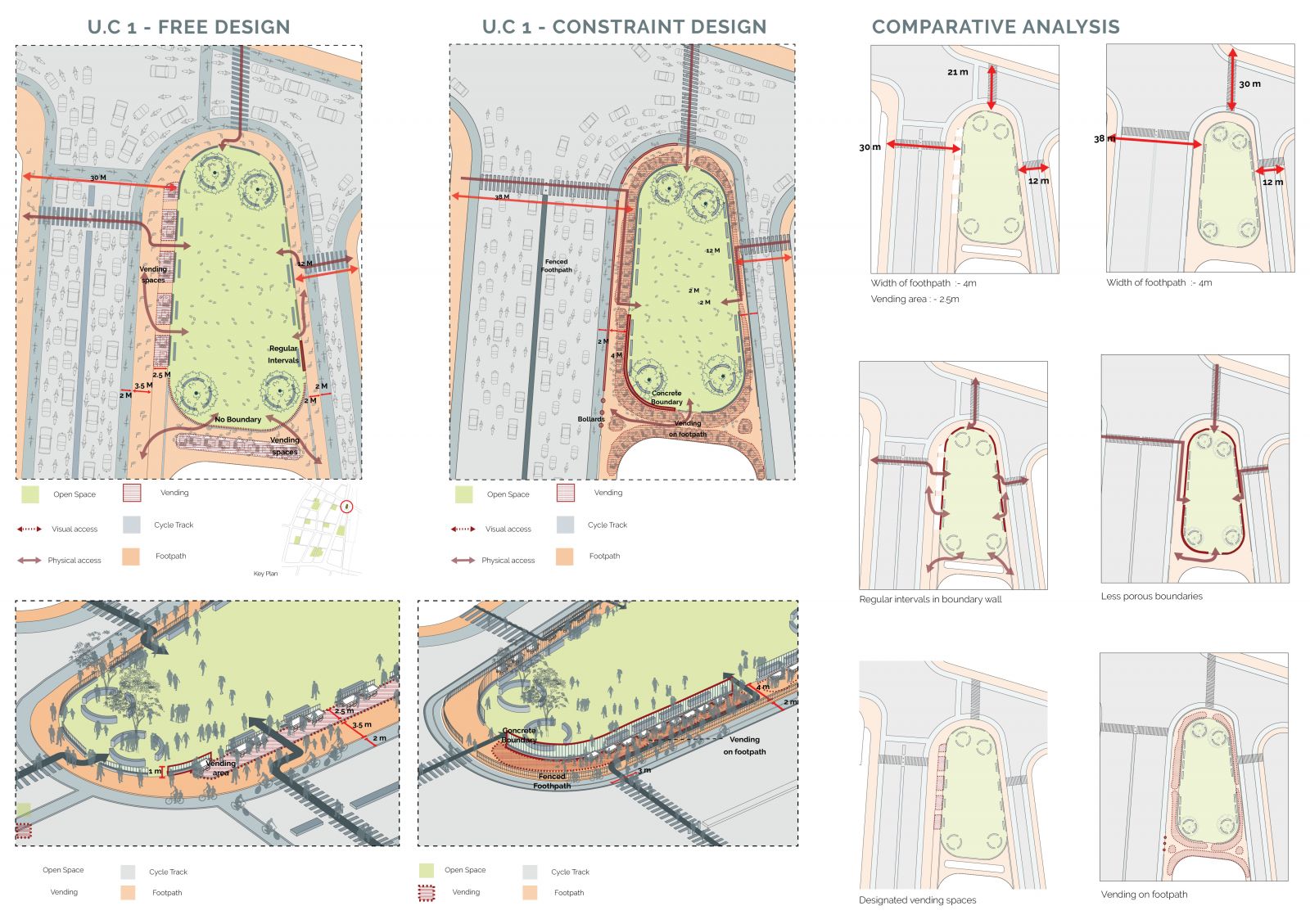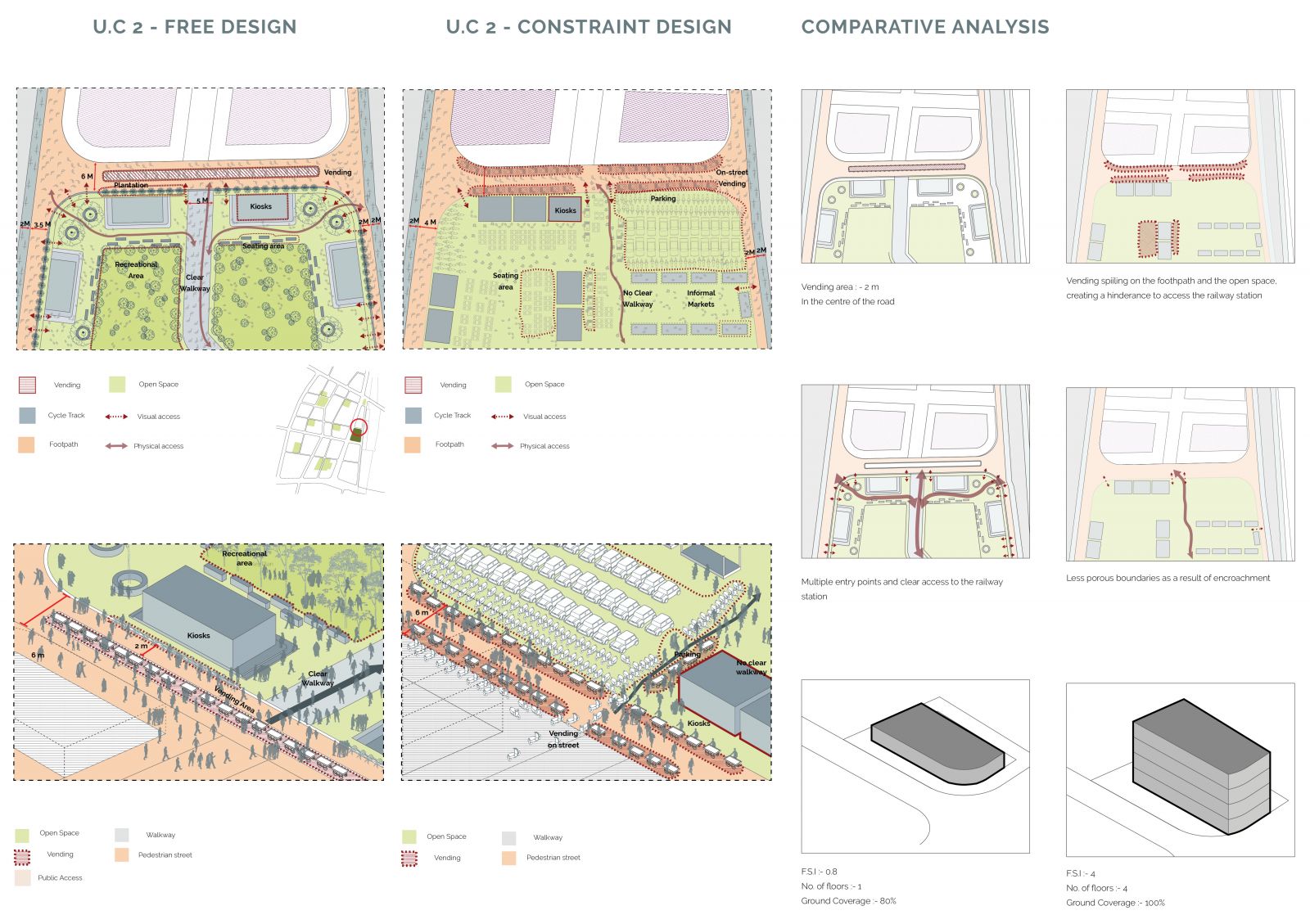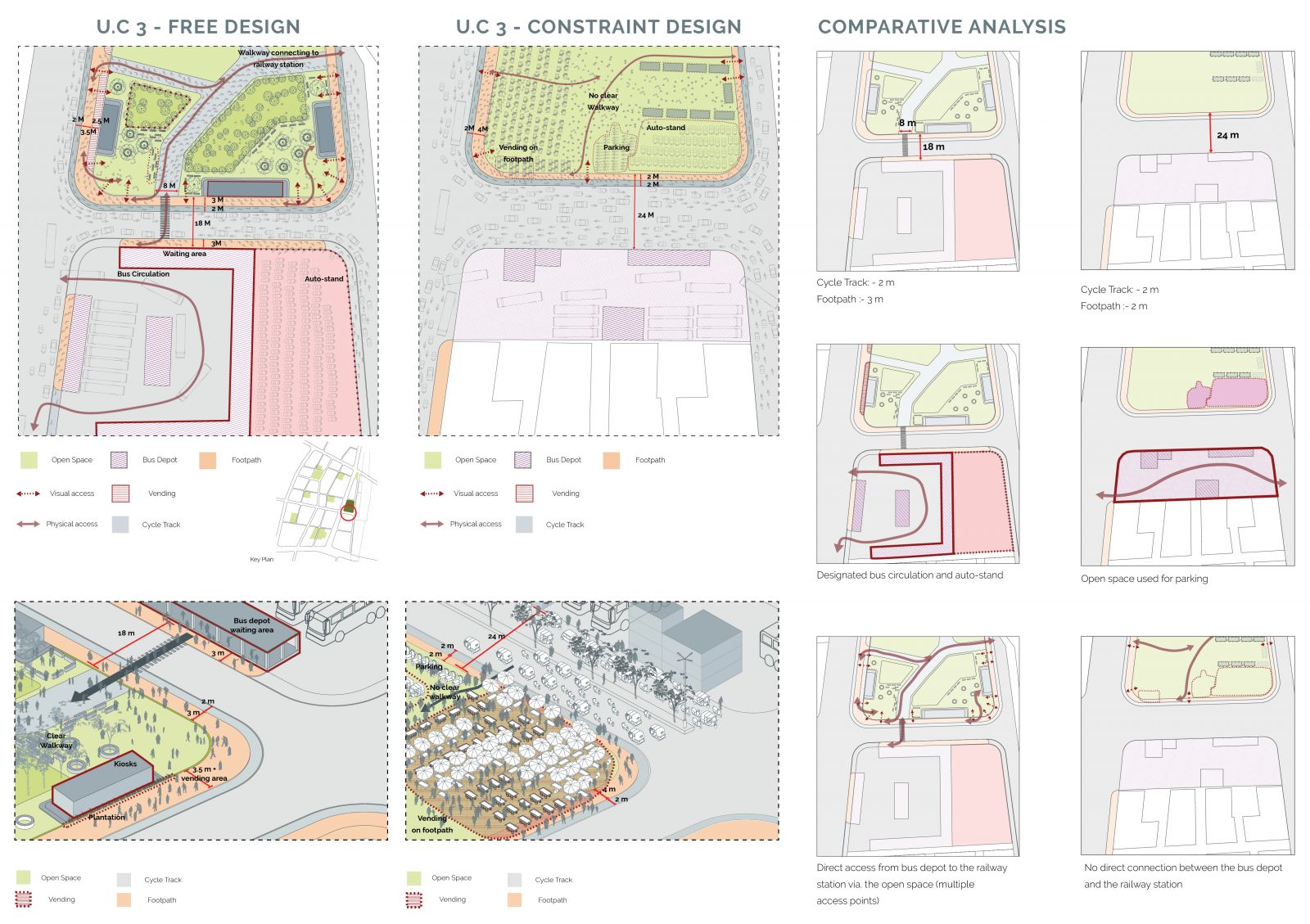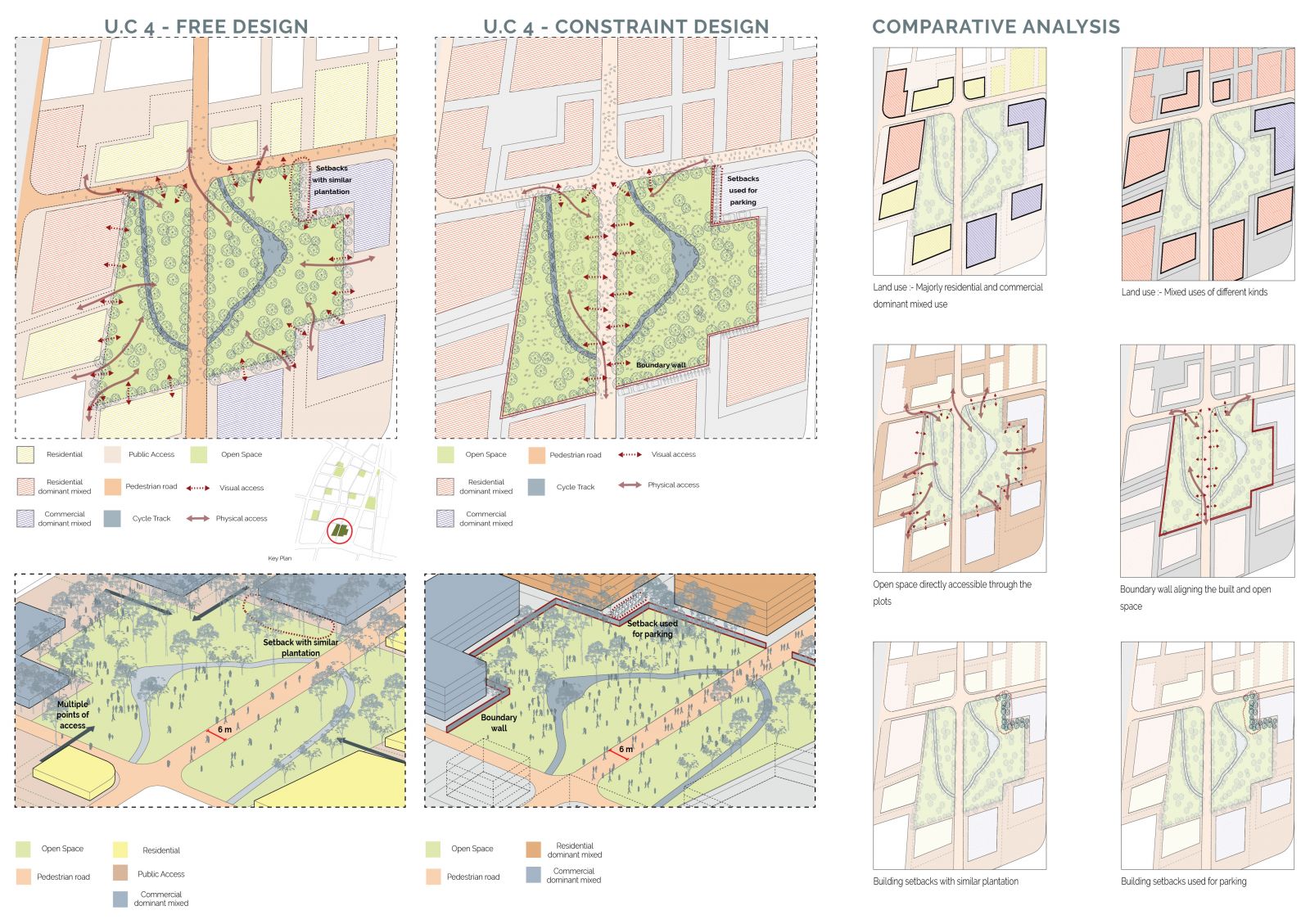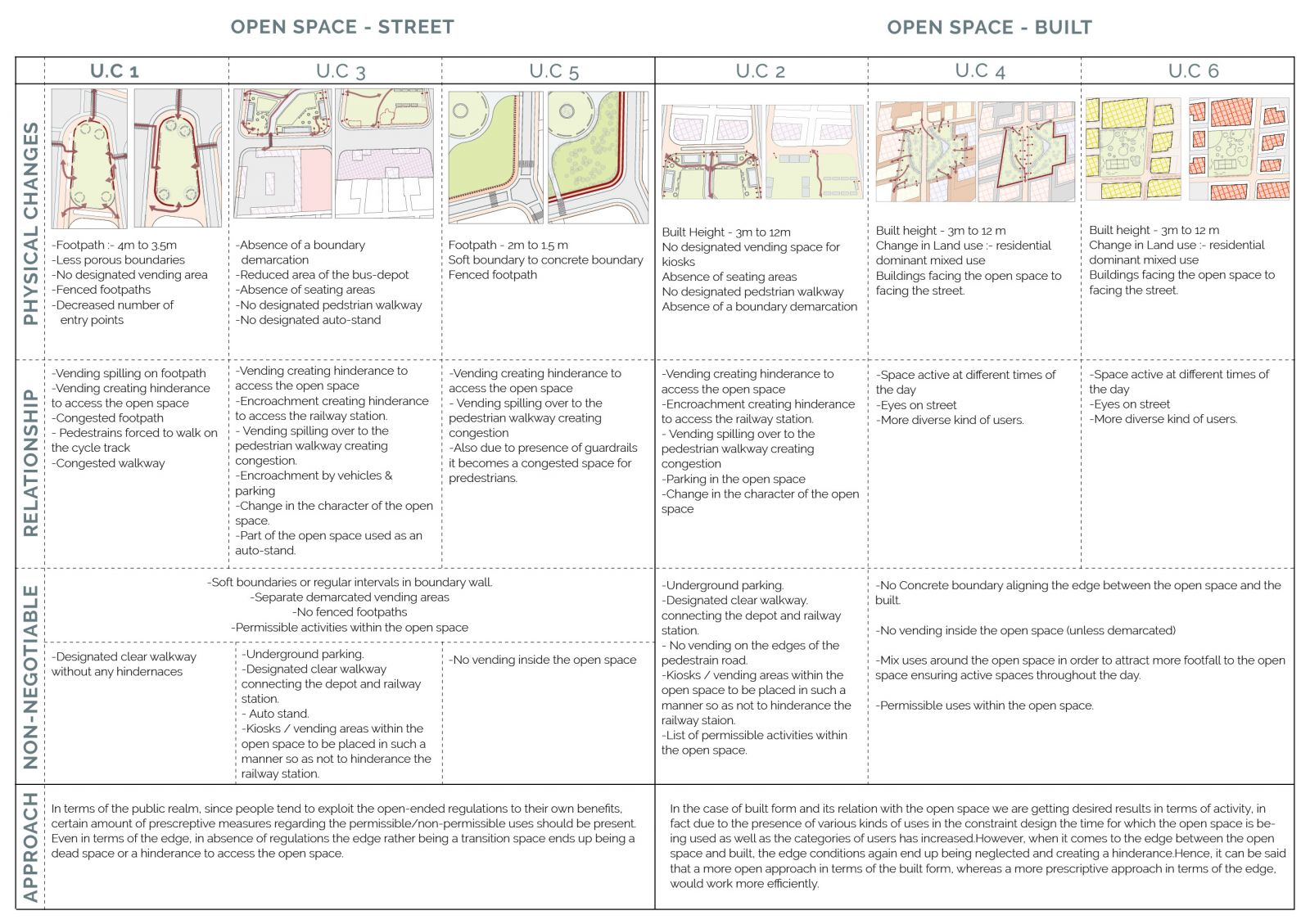Your browser is out-of-date!
For a richer surfing experience on our website, please update your browser. Update my browser now!
For a richer surfing experience on our website, please update your browser. Update my browser now!
Historically, the planning system has been oriented towards servicing the elite developments, as opposed to redistributing benefits in an equitable manner. The consequences of the authoritarian top down approach can be seen in the regular floods and diminishing mangrove cover.. Hence, the project aims at reducing the polarization within Andheri. Further looking at open space as the main protagonist, the principles and strategies derived have been implemented along with the constraint regulations in order to gain an understanding of the role that regulations play in the urban fabric.
